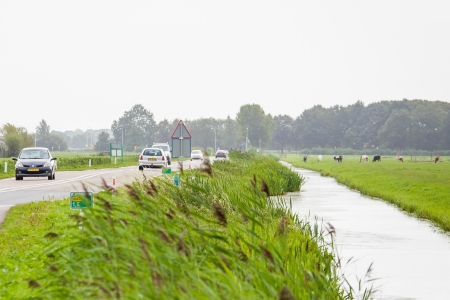People should know that, on average, they only have one minute to exit a submerging vehicle and that they do not have time to call emergency services [13]. Public service advertising may increase this knowledge (see the examples of campaigns below), but the stressful nature of a submerged vehicle crash makes it uncertain whether people will practise what they have learned.
In 2009, the Ministry of Transport, Public Works and Water Management campaigned for drivers always having an emergency hammer within easy reach. A 2010 ministry evaluation [2014] indicated that the number of respondents knowing that an emergency hammer is one’s best bet for escaping a submerging car had risen from 28% to 38%. The share of drivers having an emergency hammer in their cars increased from 51% to 55%.
Before and after the Canadian campaign ‘Operation ALIVE’, students filled in a questionnaire about what to do when their vehicles hit the water. In 2006, before the campaign, 52% had indicated the need for a speedy exit. In 2010, this percentage increased to 76%. The 2010 survey did, however, coincide with a tragic submerged vehicle crash that was widely reported, which make it harder to draw firm conclusions about the (net) effect of the campaign [6].
